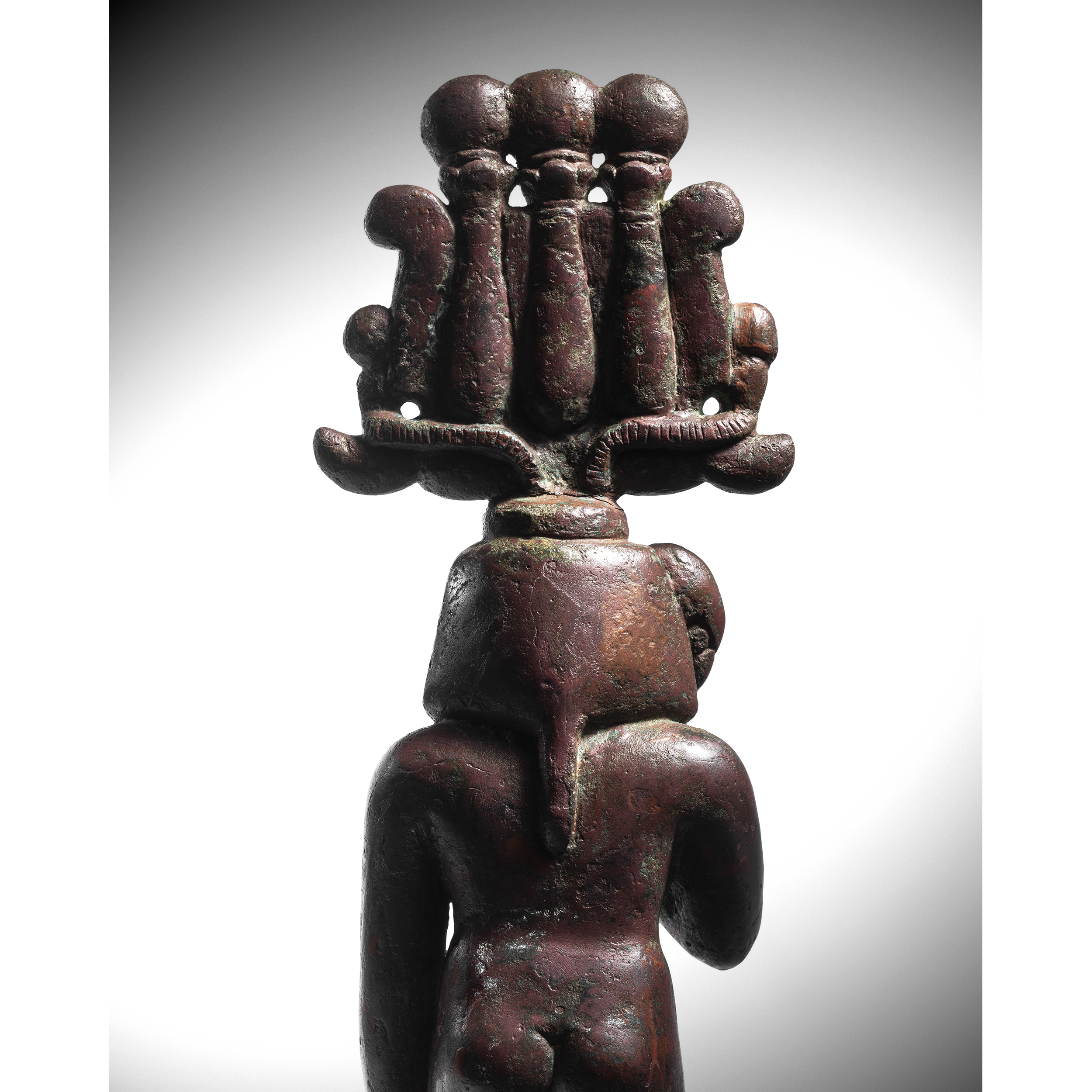Bronze à patine marron et rouge
H. 28,5 cm
Egypte, Basse-Epoque, 664-332 av. J.-C.
Provenance
Ancienne collection A.Bieri, Zurich, Suisse
Propriétaire foncier et important collectionneur de monnaies et antiquités avant les 1980
Ancienne collection Anawati, Archaeologia, Canada
Collection privée
Pour une typologie similaire
Statuette d'Horus enfant marchant et coiffé du hemhem, Basse-Epoque, Musée du Louvre, Paris, E 3642
Figuré debout, nu, dans l'attitude de la marche, il est coiffé du némès flanqué de la mèche de l'enfance, le tout surmonté par une couronne composite appellée le hemhem. Son anatomie ronde renvoie à son âge infantile, le corps n'ayant pas encore mûri et développé une musculature plus masculine.
Jeune encore, Horus revêt la forme humaine d'enfant royal nu, avec les attributs décrits ci-dessus.
Il a pour nom Horpakhered Horus l'enfant, que les Grecs transcrivirent Harpokratès, lequel succède au Ie rmillénaire à Horsaïset, Horus fils d'Isis représenté dans les Textes des Pyramides.
Sous cette forme, il se redresse, marche ou s'assied seul. Il adopte souvent le hemhem, à l'origine attribut du dieu solaire Ré-Horakhty, notamment lorsqu'il apparaît, naissant du lotus primordial.
An Egyptian bronze statuette of walking Horus as a child. Late Period, circa 688-343 B.C.
Shown standing, naked, in the attitude of walking, he is wearing the nemes flanked by the lock of childhood, all surmounted by a composite crown called the hemhem. Its round anatomy refers to its infantile age, the body having not yet matured and developed a more masculine musculature.
Still young, Horus assumes the human form of a naked royal child, with the attributes described above.
His name is Horpakhered Horus the child, whom the Greeks transcribed Harpokrates, who succeeded in the first millennium to Horsaïset, Horus son of Isis represented in the Pyramid Texts.
In this form, he straightens, walks or sits on his own. He often adopts the hemhem, originally an attribute of the sun god Re-Horakhty, especially when he appears, born from the primordial lotus.
Description complète









